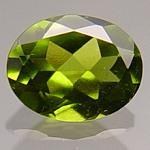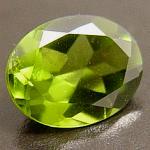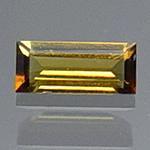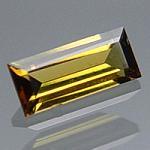|
ClassicGems.net |
|
|
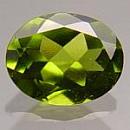 |
|
Vesuvianite (also known as Idocrase) |
|
|
Discovered in 1795; IMA status: Valid (pre-IMA; Grandfathered) |
|||
|
|
|
Chemistry |
|
|
|
|
|
(Ca,Na)19(Al,Mg,Fe)13(SiO4)10(Si2O7)4(OH,F,O)10 |
|
|
|
Calcium Aluminum Magnesium Iron Silicate Hydroxide |
|
Molecular Weight: |
1,422.09 gm |
|
Composition: |
Calcium |
28.18 % |
Ca |
39.43 % |
CaO |
|
|
Magnesium |
3.42 % |
Mg |
5.67 % |
MgO |
|
|
Aluminum |
7.59 % |
Al |
14.34 % |
Al2O3 |
|
|
Silicon |
17.77 % |
Si |
38.03 % |
SiO2 |
|
|
Hydrogen |
0.28 % |
H |
2.53 % |
H2O |
|
|
Oxygen |
42.75 % |
O |
|
|
|
|
|
100.00 % |
|
100.00 % |
= TOTAL OXIDE |
|
|
|
||||
|
Classification |
|
|
|
|
|
Silicates (Germanates) |
|
|
8/C.26-10 |
|
|
|
9 : SILICATES (Germanates)
|
|
Related to: |
Vesuvianite Group. Hydroxyl analogue of Fluorvesuvianite. |
|
Members of Group: |
Vesuvianite Group: Fluorvesuvianite, Manganvesuvianite, Vesuvianite, Wiluite |
|
Varieties: |
Alumovesuvianite, Beryllian Vesuvianite, Californite, Cerian Vesuvianite, Chrome-Vesuvianite, Cyprine, Egeran, Fluorvesuvianite, Frugardite, High-Hydrated Si-Deficient Vesuvianite, Manganidocrase, Magnesiovesuvianite, Manganoan Vesuvianite, Manganvesuvianite, Xanthite |
|
Synonyms: |
Gahnite, Genevite, Gökumite, Heteromerite, Hyacinth, Hyacinthine, Idocrase, Jefreinoffite, Jevreinovite, Loboite, Pyramidal Garnet, Vesuviana, Volcanic Chrysotile |
|
|
|
|
Crystal Data |
|
|
|
|
|
Crystals commonly as short pyramidal to long prismatic crystals, to 15 cm, morphologically complex, with up to 30 forms reported on one crystal; columnar, granular, massive. Californite is found in massive form, not as crystals. |
|
|
Twinned domains observed at a very fine scale. |
|
|
|
|
|
Physical Properties |
|
|
|
|
|
Indistinct on {110}, {100} and {001] |
|
|
Irregular/Uneven, Sub-conchoidal |
|
|
Brittle |
|
|
6.0 - 7.0 |
|
|
3.32 - 3.47 (g/cm3) |
|
|
None |
|
|
Not Radioactive |
|
|
|
|
|
Optical Properties |
|
|
|
|
|
Green, Brown, Colorless to White, Blue (Cyprine), Violet, Bluish green, Pink, Red, Black, commonly zoned; in transmitted light, Colorless to light Yellow, Green, Brown |
|
|
Transparent, Translucent |
|
|
Vitreous, Resinous |
|
|
1.698 - 1.742 Uniaxial ( -/+ ) and Biaxial |
|
|
0.0040 - 0.0060 |
|
|
Strong; 0.019 - 0.025 |
|
|
Weak; O = colorless to yellowish, E = yellowish, greenish, brownish |
|
|
|
|
|
Occurances |
|
|
|
|
|
Geological Setting: |
In skarns formed during contact or regional metamorphism of limestones; in garnetized gabbros, mafic and ultramafic rocks, and serpentinites; uncommon in alkalic igneous rocks. |
|
Common Associations: |
Grossular, Diopside, Wollastonite, Epidote, Scapolite, Spinel, Calcite |
|
Common Impurities: |
Fe, Be, B, F, Cu, Li, Na, K, Mn, Ti, Cr, Zn, H2O |
|
Type Locality: |
Monte Somma, Somma-Vesuvius Complex, Naples Province, Campania, Italy |
|
Year Discovered: |
1795 |
|
View mineral photos: |
|
|
|
|
|
More Information |
|
|
|
|
|
|
|
|
|
|
|
Vesuvianite, also known as Idocrase, is a silicate mineral that is a member of the Vesuvianite mineral group that includes Cyprine, Vesuvianite and Wiluite. Vesuvianite is found in colors ranging from green to brown and also a blue variety called Cyprine. yprine is colored blue by the addition of copper to its chemistry and is also refered to as Cupreous Idocrase or Cupreous Vesuvianite. The complexities of Vesuvianite's chemistry leads to the wide range of colors and properties. The green variety is similar in color to Peridot gems. The name Idocrase is a popular synonym of Vesuvianite. Vesuvianite is an IMA approved mineral name, Idocrase is not. Vesuvianite was named in 1795 by German geologist Abraham Gottlob Werner (1749-1817) from its discovery locality on Mt. Vesuvius, Campania, Italy. However, Vesuvianite was not this mineral's original name though. It has had many names over its history. It was originally named "hyacinthus dictus octodecahedricus" in 1723 by Swiss naturalist Moritz Anton Kappeler (1685-1769). It was renamed "hyacinte du Vesuve" in 1772 by French mineralogist Jean-Baptiste Louis Romé de L'Isle (1736-1790). It was renamed "hyacinthine" in 1792 by French mineralogist Jean-Claude Delamétherie (1743-1817). It was named "vesuvian" twice, once in 1794 by Irish geologist Richard Kirwan (1733-1812) and again in 1795 by German geologist Abraham Gottlob Werner (1749-1817). Vesuvianite was renamed Idocrase in 1796 by French mineralogist René Just Haüy (1743-1822). The name Idocrase is from the Greek words idos and krasis, meaning mixed appearance due to its varied crystal shapes. A variety of Vesuvianite from California, USA and has been nick-named Californite or California Jade. This bright green opaque to translucent material comes from near Happy Jack mine, Siskiyou County and near Pulga, Butte County, California. There are many sources of Vesuvianite such as Asbestos, Quebec, Canada; California, Colorado and the New England region of USA; Mt. Vesuvius, Italy; Ural Mountains, Russia, Switzerland, Tanzania and Kenya. However, there are only a few sources of gem quality crystals. A small amount of gemmy material has come from Asbestos, Quebec, Canada. Recent finds in Tanzania and Kenya have brought some very nicely colored gems to the market. |
|
|
Vesuvianite gems for sale:
|
||||||||||||||||||||||||||||||||||||||||||||||||||||||
